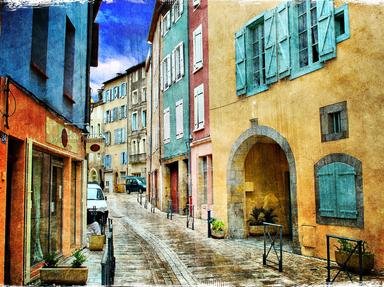Quiz Answer Key and Fun Facts
1. One of the best known sculptures from pre-historic times is a small figurine of a very voluptuous female. Sculptures of this sort have been found in Central Europe. This famous lady has been given what name?
2. Prehistoric cave art of Europe, usually known as cave paintings, usually depict animals. What animal would you probably not see in a cave painting?
3. The art of the ancient Near East (roughly, Mesopotamia) is well known and admired today. The ancient Greek, Herodotus, tells of a great temple in Babylon, with an ornate gate of dark blue glazed brick decorated with snarling lions, the dragon of Marduk, and the bull of Adad. What is the name of this gate, dedicated to an important goddess?
4. Ancient Egypt had, and still has, many important works of art. One important landmark had stood over 2,000 years, but was threatened by the building of the Aswan High Dam on the Nile River. What ancient colossus, about 60 feet high, was carved into the surrounding rock, yet saved by modern technology?
5. This sculpture is a beautiful image of a woman from long ago, perhaps the most beautiful in all art history. The sculpture, from Ancient Egypt, is usually seen in profile, and some say it resembles a flower on a long stalk. The woman was the queen of the pharaoh Akhenaton. Who was this never-to-be-forgotten beauty?
6. A death mask made of beaten gold was found at Mycenae by Heinrich Schliemann in 1876. It was given the name of the king of Mycenae during the time of Homer's "The Iliad". What is the name of this mask?
7. Greek art was at its peak of perfection about 450-430 B.C., a time of lifelike perfection in sculpture especially. This period is known as the High Classical Period, or more commonly as what?
8. Many of the sculptures from the Classical Period Parthenon, and other buildings, were taken to the British Museum between 1801 and 1803. These sculptures were known by what name?
9. On the Italian Penninsula, before the Romans, the Etruscans ruled. What is known about this culture has resulted mainly from scholars studying the art and other remains of their elaborate burial grounds. Is that statement true or false?
10. Much of Roman art and architecture seems to have derived from the Greeks. However one major aspect of Roman art was uniquely their own.
What did the Ancient Romans excel in?
Source: Author
mpkitty
This quiz was reviewed by FunTrivia editor
looney_tunes before going online.
Any errors found in FunTrivia content are routinely corrected through our feedback system.

